
Is Caravanning part of your 2018 plan
- No impact on credit score
- Fast turnaround times
"*" indicates required fields

"*" indicates required fields
If caravanning is in your plans for 2018, then we have the guide to help you research the best options available to suit your budget and travel style. We have collated some valuable advice and tips from some of the leaders in the caravan industry plus we will include a range of resources to help you plan your next caravan purchase or holiday.
Caravanning has been steadily increasing in popularity in Australia across all age groups in recent years with a 2017 report from the Caravan Industry Association Australia showing a 30.7% increase in Caravan and Campervan sales since 2011. The same report highlighted that in 2016 Queensland was the biggest Caravan loving state – having 26% of the all registered Caravans. NSW on the other hand, had a higher preference for the Campervan (25.7%). At any one time there are at least 120,000 caravans on our roads and 600,000 registered owners in Australia!
While cashed up ‘Baby Boomers’ are contributing to the increase in the caravanning market, it is young families looking for economical holidays that are not only fuelling the boom and current trends, but also changing the perception of caravanning away from just being for ‘Grey Nomads’.
In our own recent 2017 research, we found that the largest segment to finance a caravan or motorhome in Australia are 36-55 year olds (66%) Married (80%) with Children (62%). Across all age groups combined we found that the average customer was spending between $35,000-$50,000 on their new asset with 62% of customers purchasing a Caravan and 16% purchasing a Camper Trailer.
Joshua Carnavas, Managing Director from Brisbane Camperland | Jayco said
“The market is diversifying to meet the changing needs of customers, and we’re seeing a rise in the desire for more specialised products such as Hybrids, combining Camper Trailer and Caravan features”.
“With families, we are seeing a move more towards Pop Tops and Full Caravans with bunks as their first Caravan, rather than starting out with a more basic Camper Trailer. Campervans are also on the rise which are particularly popular for singles wanting to travel alone or with a friend. They are a great option offering effortless camping and travelling.”
According to online resource ‘Lets Go Caravan and Camping’, before you head to dealerships or shows, you should first answer the following questions:
Answering these questions should give you more clarity as to the what might be the best option for you. But what are the differences between ALL of the caravanning options on the market?
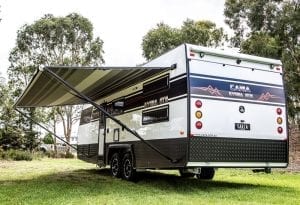

NextGen Caravan (Courtesy of Green RV’s)
There is no easy way to define a ‘caravan’ due to the vast range of shapes, sizes and comfort levels that is available in the market today. Here are the main distinguishing features:
If you have a towing vehicle, the choices are endless in Caravans, so think carefully about what you need.
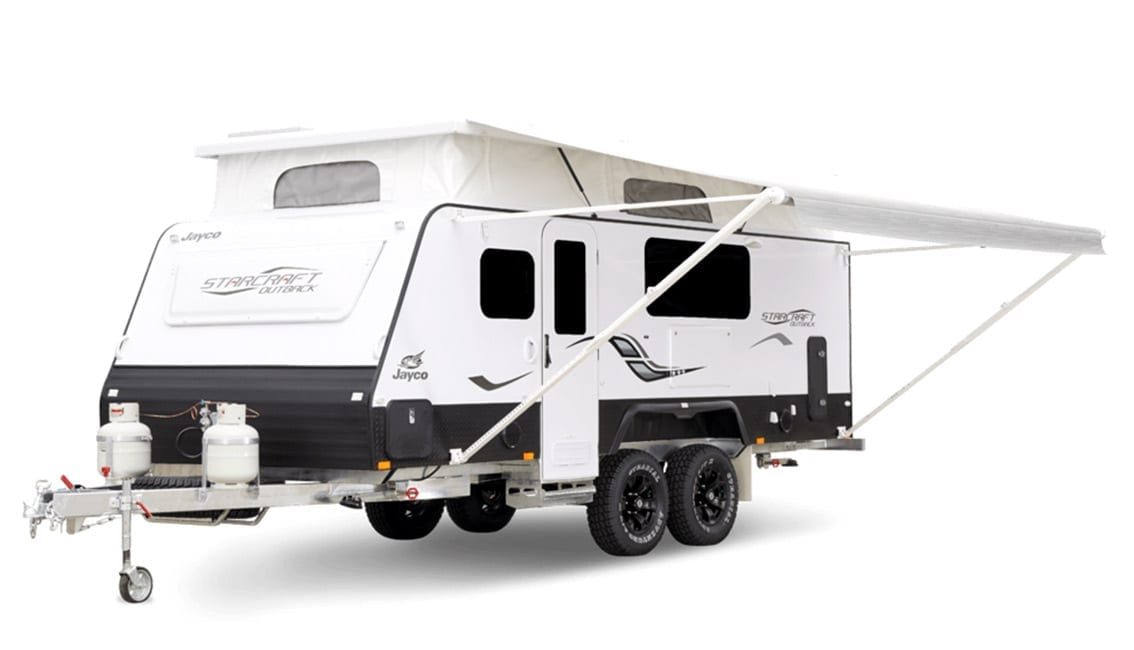
Pop Up Caravan (Courtesy of Brisbane Camperland)

Pop Up Caravan (Courtesy of Green RV’s)
A Pop-Top caravan is very similar to a standard Caravan but with a lower height profile.
When setup on-site, the roof section raises up to provide full height standing room.
The main advantages of a Pop-Top are:
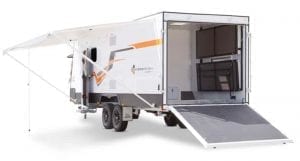
Jayco Basestation (Courtesy of Brisbane Camperland)
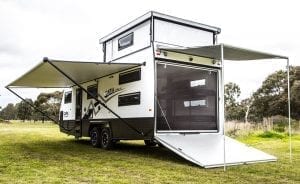
Caria Caravans GT8 2 story Toy Hauler
(Courtesy of Caria Caravans)
The Toy Hauler Caravan combines living space with storage space for large and small leisure ‘toys’.
A Toy Hauler Caravan combines a mobile living space with an equipment ‘hauling’ space (or as some describe it, a caravan with a mobile garage attached). They range in size and features from large family Caravans with dedicated storage for your equipment; large robust equipment haulers with basic accommodation/living space, down to compact off-road camper trailers. Features include:
Learn more by reading our ‘All about Toy Haulers‘ article.
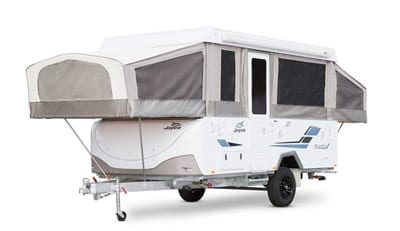
Camper Trailer (Courtesy of Brisbane Camperland)
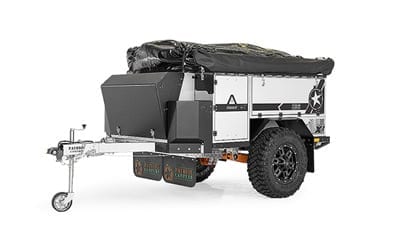
Adventure Camper Trailer (Courtesy of Patriot Campers)
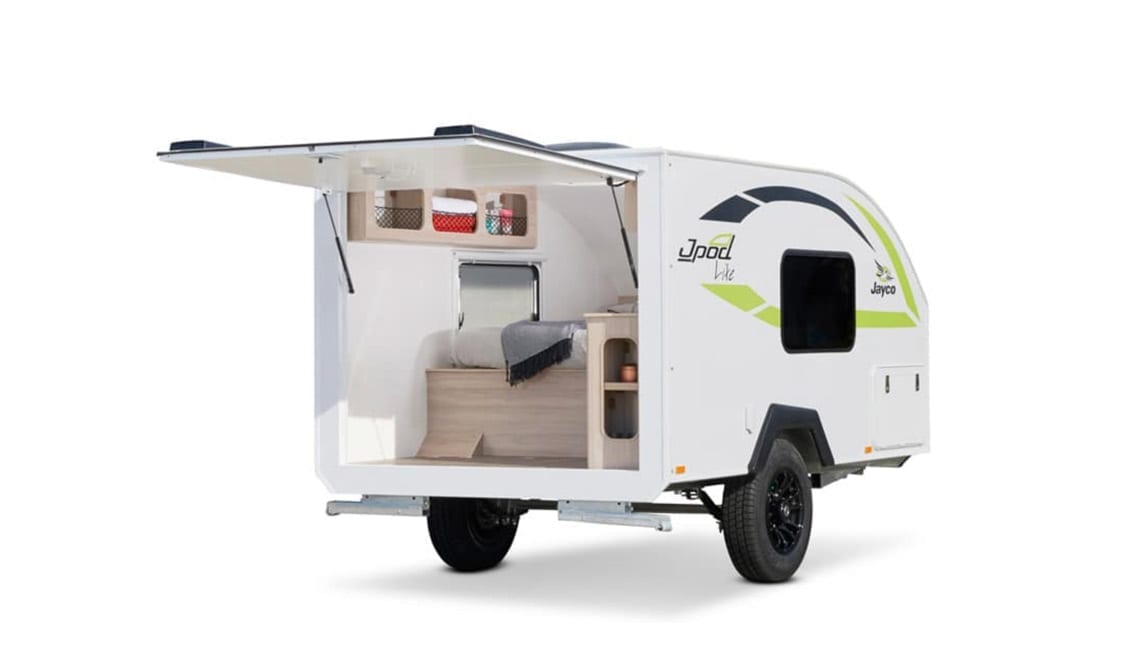
‘JPod Lite’ Camper (Courtesy of Brisbane Camperland)
Camper Trailers & ‘Pods’, have become one of the most economical and practical ways to go caravanning and often the choice of those wanting to upgrade from camping in a tent to a bit more comfort.
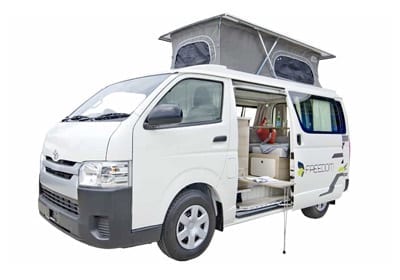
Jayco Campervan (Courtesy of Brisbane Camperland)
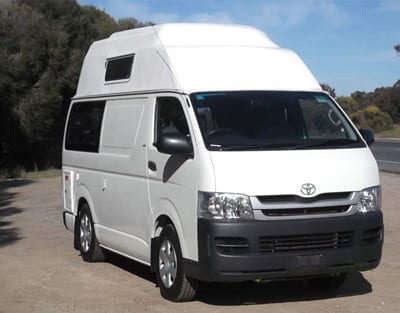
HiTop Campervan (Courtesy of Talvor)
Campervans are often converted transportation vans which have been specifically fitted out for caravanning/camping.
The added beauty of a Campervan is they offer year round use by doubling as a standard vehicle that requires no special storage space.
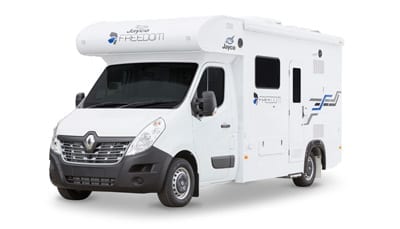
Freedom Motorhome (Courtesy of Brisbane Camperland)
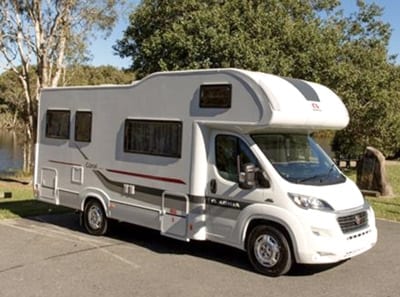
Adria Motorhome (Courtesy of Apollo Caravan & RV’s)
Motorhomes or Recreational Vehicles (RV’s) are an all-in-one Accommodation and Transportation vehicle and ideal for those that do not want to tow behind a car.
Like Caravans, Motorhomes/RV’s come in a vast range of sizes, shapes and specifications – so consider first what are you ‘Must Have’ & ‘Nice to Have’ features.

5th Wheeler
The 5th Wheeler, a lesser known option in Australia than overseas, is a combination of a Motorhome and a Caravan where the ‘van’ is connected to a Trayback Ute via for towing using a turntable for articulated motion.
A 5th Wheeler is what you buy when a Caravan is just not big enough! You do however need to purchase a suitable Ute with capacity to legally tow a 5th Wheeler (think Iveco crew cab, Ford F-250, Toyota LandCruiser 70 Series and Ford Ranger Super Cab).

Slide-on Camper (Image: Trayon Campers)
Slide-On Campers are designed to easily convert an everyday ute (either a flat tray or full bodied) into a small RV.
They are ideal and very popular for those who also want to upgrade from tent camping and still be able to tow a trailer, bike, horse float, jetski or boat behind the Ute.
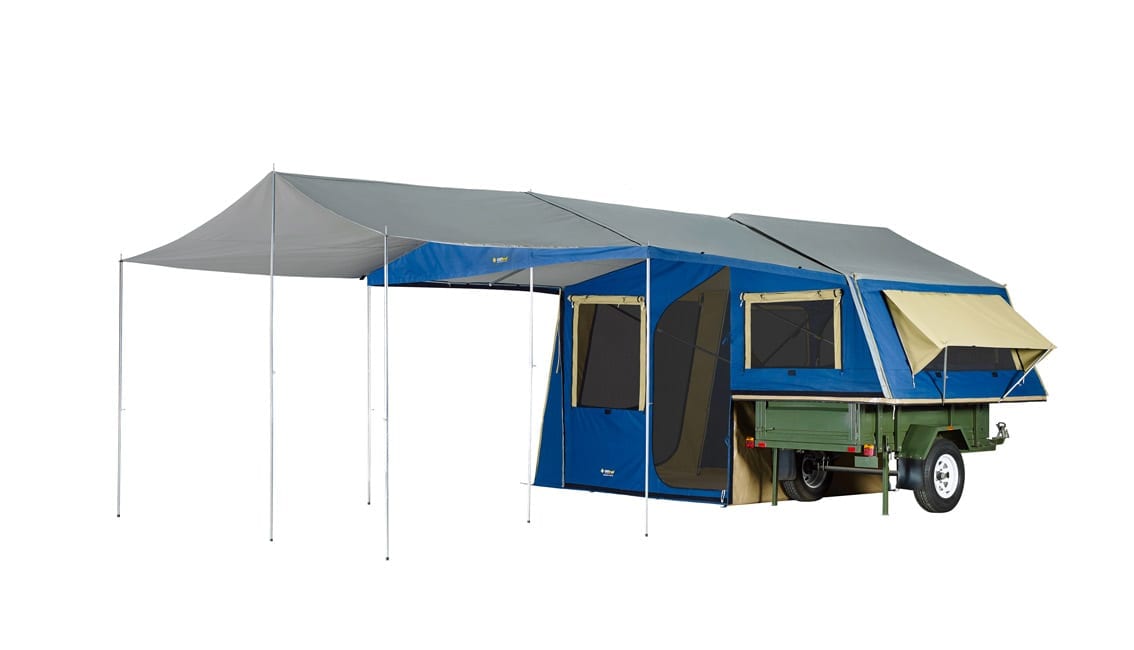
Tent Trailer (Image: OzTrail)
A Tent Trailer is the most basic of options for caravan/camping and easy towed behind any type of vehicle.
Most tent trailers do not include any features other than sleeping space.
Start by referring back to your ‘list of considerations’ (from above) and identify your timeframe. Then determine your approximate budget and how you will fund the asset. If you are planning to finance your van, ensure you get a finance quote and even pre-approval before you go shopping, so you know exactly how much you can borrow and then spend – particular if you are at a show and want to grab a ‘show only bargain’.
Your local Caravan dealerships are a great place to get the expert and specialist advice you need especially on specific brands they sell.
We asked Joshua from Brisbane Camperland for his top advice for customers:
“The top of anyone’s list should be to:
Finally, there are also loads of Caravanning, 4×4 and Outdoor shows/expos on around the country in 2018 that showcase the latest models and accessories on the market. This is a great place to get a feel for what is out there, but if you are going to pick up a show bargain, make sure you get in early and have your caravan finance pre-approved and ready to go!
____
"*" indicates required fields
| Lender | Comparison Rate | Source |
|---|---|---|
| 360 Finance | 7.76%* | Link to source |
| Westpac | 7.69%* | Link to source |
| St George | 6.13%* | Link to source |
| CBA | 9.9%* | Link to source |
| BOQ | 8.19%* | Link to source |
| RACQ | 6.16%* | Link to source |
| CUA | 7.16%* | Link to source |
